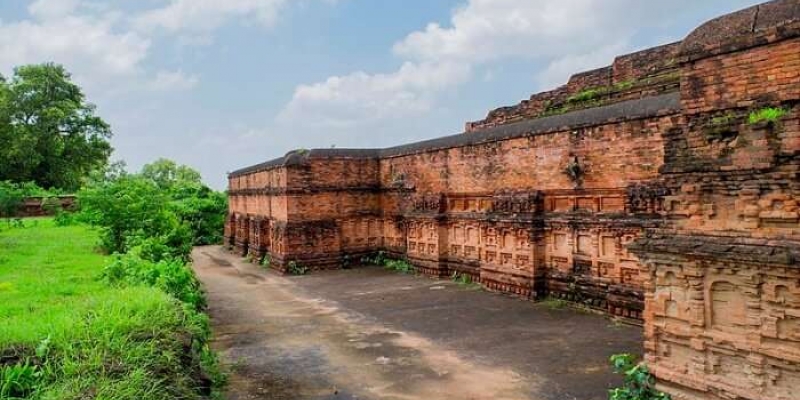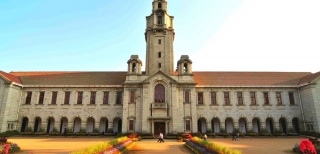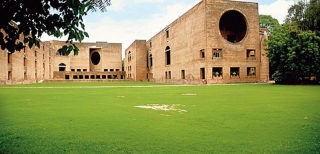Nalanda Mahavihara An education hub from the past
Nalanda Mahavihara is the archaeological remains of a reclusive and academic institution emerging from the 3rd century BCE to the 13th century CE
Nalanda Mahavihara Education Hub - Located in the Nalanda district of Bihar state, Nalanda Mahavihara is the archaeological remains of a reclusive and academic institution emerging from the 3rd century BCE to the 13th century CE. The Archaeological Spot of Nalanda Mahavihara is situated in the North-eastern state of Bihar, India. Extended across a geographical area of 23 hectares the site of Nalanda Mahavihara presents is known to be emerging from circa. 3rd Cen BCE with one of the initial, the chief of its time and lengthiest serving frugal um pedagogic establishment in Indian Subcontinent from 5th Cen CE - 13th Cen CE prior to the postbag and desertion of Nalanda in the 13th Century. It is made up of stupas, chaityas, viharas, shrines, several supplicatory constructions and remarkable art works in stucco, stone and metal. The design of the structures appears to the alter from group around the stupa-chaitya to an official lined alignment neighboring an axis from south to north. The significant development of the building swears to the development of Buddhism into a faith and the thriving of ascetic and educational civilizations.
# What history says?
Located close to Magadha’s capital Rajagriha (presently Rajgir), Nalanda was once thriving on its ease in trade. According to various sources, Gautam Buddha imparted lectures in a nearby mango grove known as Pavarika and Jain thirthankara, Mahavira also made his stay at Nalanda for about 14 drizzling seasons therefore authenticating the being of the place to as early as the 5th–6th century BCE. The Tibetian Lama Taranatha of the 17th century stated that a big temple was made at the location of chaitya of Shatiputra at Nalanda by the prodigious Indian ruler of the Maurya Dynasty, Ashoka who later adopted Buddhism. Taranatha also mentioned that Nagarjuna, a 3rd-century CE luminary and Mahayana philosopher who was the head of the institution while his contemporary, another luminary Suvishnu built nearly 108 temples in the area. Nalanda Mahavihara, being a hub for higher education signifies the top in the growth of sangharama (monastic founding) into the initial higher learning institutions of early medieval India. Its merit-based pattern is known to have contained all modern sources of knowledge and systems of learning popular in the Indian subcontinent.
While the initial mahavihara was a lot bigger structure, all enduring remains of Nalanda showing in the property area of 23 hectares are comprised of 11 viharas and 14 temples, along with several smaller shrine and votive constructions, validate sufficiently its attributes such as axial planning and layout along north-south axis, its architectural appearance and existing building materials and practical ornamental embellishments. Conserved in-situ are the structural leftovers of viharas and chaityas whose layers of construction exhibit growth of the respective forms. The placing of these structures over the degree of the site shows the planned layout distinctive to Nalanda. The property also recalls a corpus of portable and stationery objects and artistic trappings that depict iconographic expansion denoting changes in Buddhist belief system.
Academics and students from farther regions like China, Japan, Turkey, Persia, Korea, Tibet and Indonesia became a part of the Mahavihara. Subjects trained here included Mahayana, Hinayana, Samkhya, Atharvaveda, Shabdavidya, Chikitsavidya and Vedas among various others. As per the unadventurous Tibetian sources, Nalanda was also having an enormous library known as ‘Dharmaganja’ that included three multi-storied networks called ‘Ratnaranjaka’ (Jewel-adorned), ‘Ratnodadhi’ (Sea of Jewels) and ‘Ratnasagaral (Ocean of Jewels). Gatherings of the library comprised spiritual documents and texts on medicine, stargazing, logic, fortunetelling and literature among others. According to I-tsing, the monks would gather to deliberate administrative and other conclusive stuffs and confirmed decisions only after taking approval of all at the meeting as also the occupant monks.









